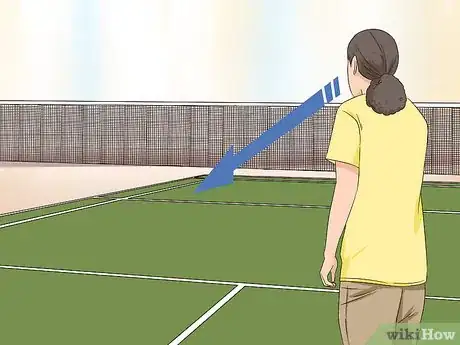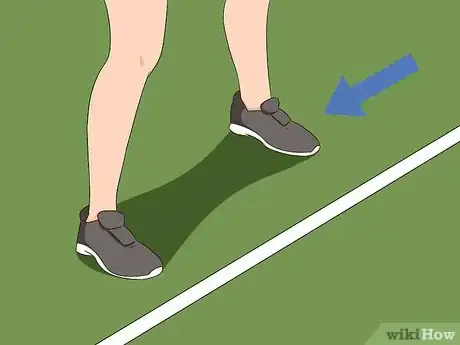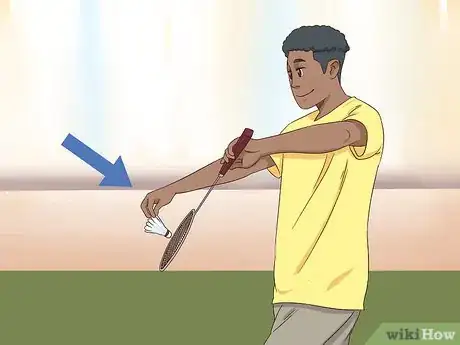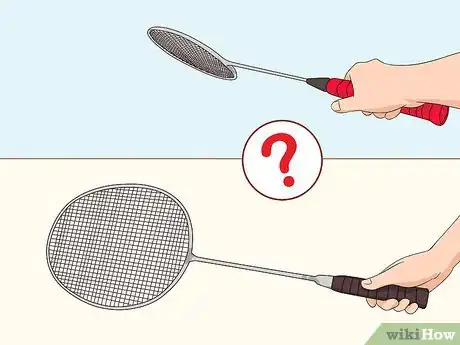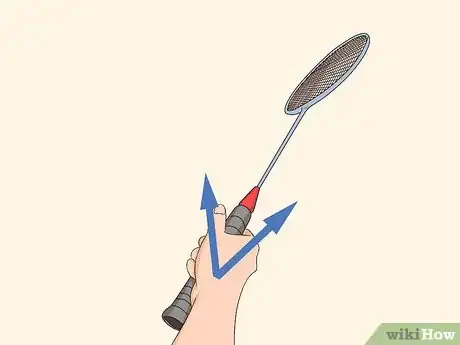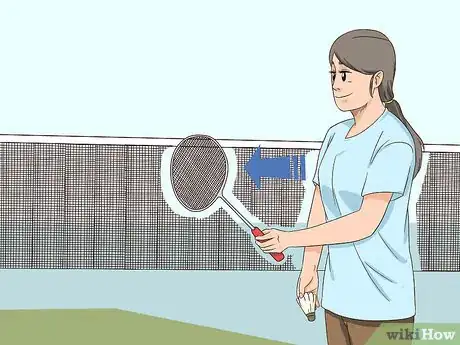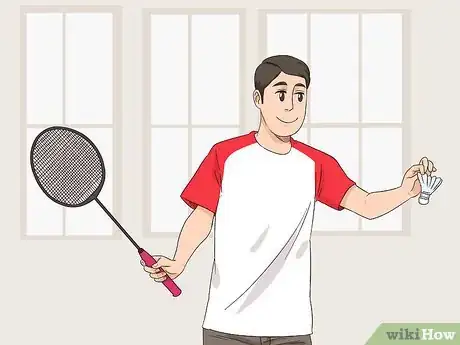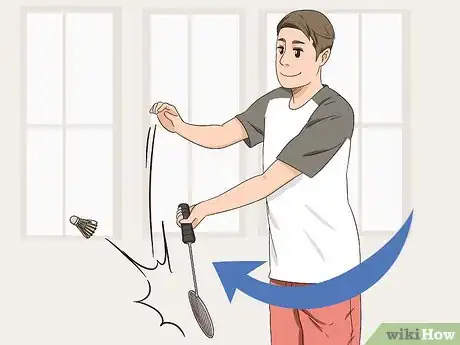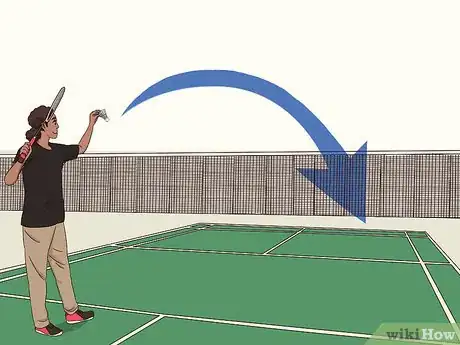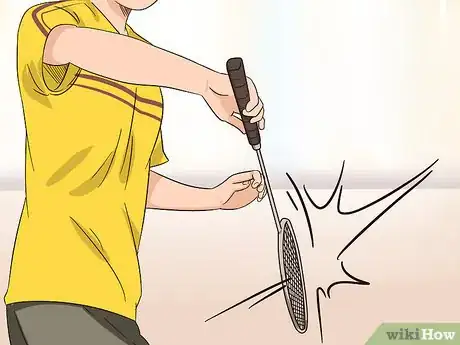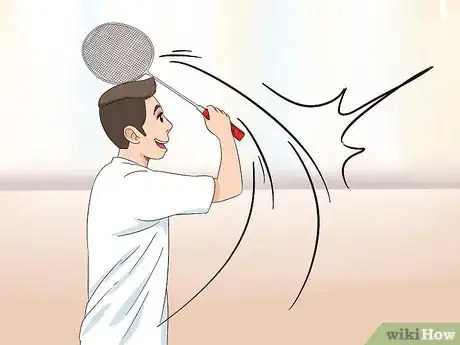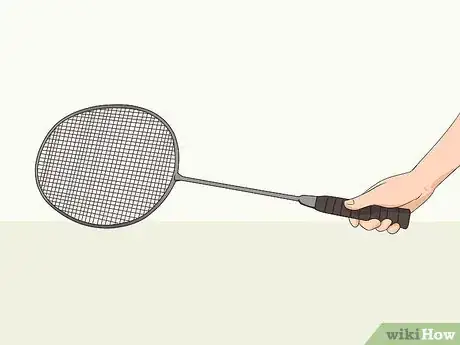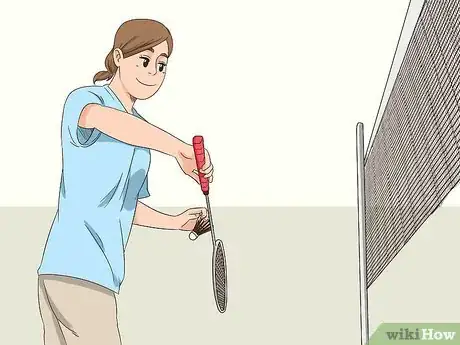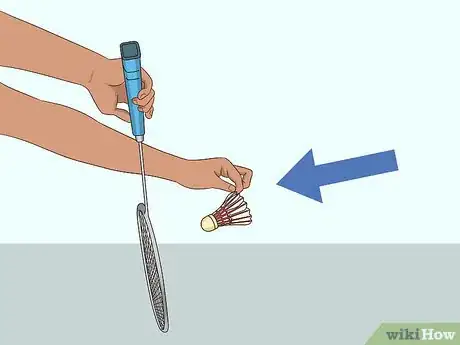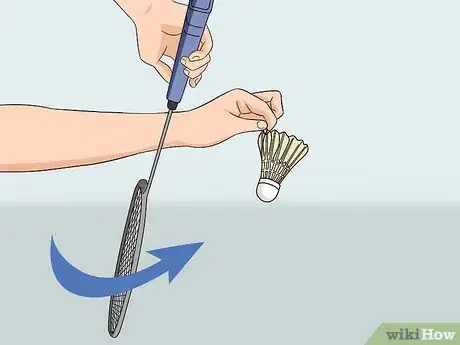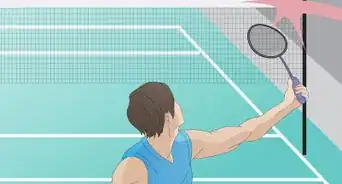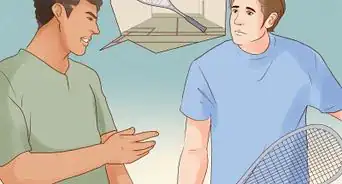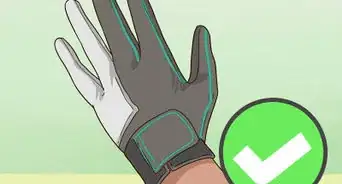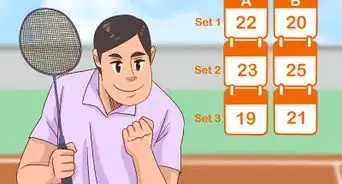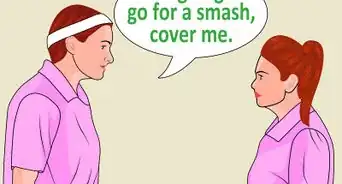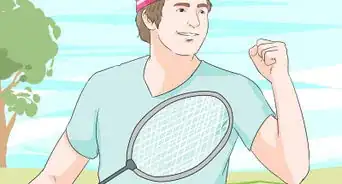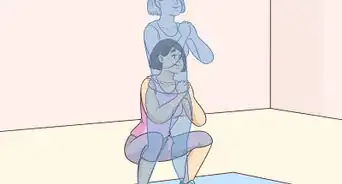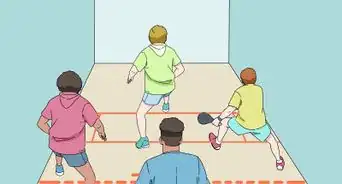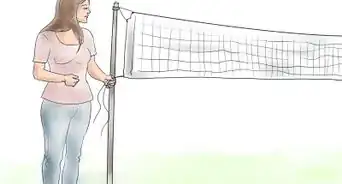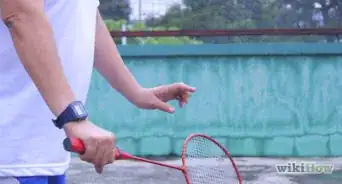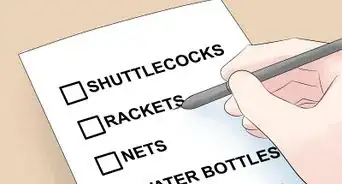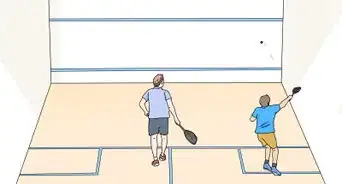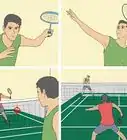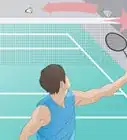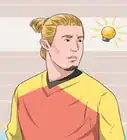This article was co-authored by wikiHow staff writer, Amy Bobinger. Amy Bobinger has been a writer and editor at wikiHow since 2017. She especially enjoys writing articles that help people overcome interpersonal hurdles but frequently covers a variety of subjects, including health and wellness, spirituality, gardening, and more. Amy graduated with a B.A. in English Lit from Mississippi College in 2011 and now lives in her hometown with her husband and two young sons.
There are 10 references cited in this article, which can be found at the bottom of the page.
This article has been viewed 131,410 times.
Learn more...
In badminton, a player must serve the ball at the start of every rally. Since serves are used so frequently, it’s important to know how to use different techniques to keep your opponent on their toes! For example, you might use a high serve so the shuttle will land at the back of the court, followed by a low hit that will land near the net. Luckily, once you understand the basics, you can easily mix up your serves while you’re on the court!
Steps
Basic Rules
-
1Stand inside a service court, not touching any boundary lines. If any part of your body touches a service line, your team will be at fault and your serve will not count. The service court you use will depend on whether you are playing singles or doubles and the side of the court will depend on your score.[1]
- If you are playing singles, stand 2–3 ft (0.61–0.91 m) behind the short service line, which is the line closest to the net.
- If you’re playing doubles, stand 2–3 ft (0.61–0.91 m) behind the inside back line. This isn’t the very back line, but the next one in.
-
2Serve from right to left if your score is an even number, and vice versa. The direction of the serve depends on the score. If your score (or your team’s score in doubles) is an even number, or at the beginning of the game, you will serve from the right service court, and you should hit the ball towards your left.[2]
- Your serve will only be in if it lands in the diagonally-opposite side of the court.
- If your score is an odd number, serve from the left service court.
Advertisement -
3Don’t lift your feet off the ground during the serve. Badminton rules state that you have to keep at least some part of both of your feet on the ground while you’re serving. Your back left foot will naturally lift as you swing the racket, but be sure to keep your toes on the ground![3]
- The rules also state that you should not drag your foot along the ground during the serve, although you can pivot.
-
4Hit each shot from below your waist. When you're serving, the shuttle must be below the bottom of your rib cage, otherwise the hit is considered illegal. Overhanded serves like you see in tennis or volleyball are not permitted.[4]
-
5Vary your serves so they won't be predictable. If you hit a low serve every shot, for instance, your opponent will begin to expect them. Mix up your shots between low serves, high serves, flicks, and drives, so your opponent will always be left guessing where your next serve will go.[5]
Forehand Serves
-
1Hold the racket so your thumb and middle finger touch in forehand serves. When you’re gripping the racket for a forehand serve, turn it on its side and hold the handle like you’re shaking hands with it. Your middle finger and thumb should rest against each other, and the space between your thumb and index finger should be in the shape of a V.[6]
- Your last 2 fingers should be wrapped around the racket’s handle.
- Leave a space between all of your fingers to ensure you’re not gripping the racket too tightly.
-
2Stand sideways with your weight on your back foot. Your non-dominant foot should be in front. By standing with your opposite foot in front, you will be able to smoothly swing the racket in front of your body. The way you shift your weight during your swing will help give you more control over your hit.[7]
- You’ll hold the racket in your dominant hand, and the shuttle in your non-dominant hand.
-
3Hold the shuttle by the feathers with your thumb and index finger. The shuttle cork should be facing downward. For a forehand swing, you must drop the shuttle into the path of the racket. By gripping the feathers between 2 fingers, you’ll get a cleaner drop. Try to hold the shuttle a little lower than your chest and off the side.[8]
- Hold your other fingers straight out so you don’t accidentally hit them with the edge of the racket.
-
4Release the shuttle just before you swing the racket in a forehand swing. Bring the racket back to about your shoulder, then drop the shuttle and swing the racket forward. Time the drop and the swing so that the racket meets the shuttle below your waist. [9]
- Most serves in badminton are more about pushing the shuttle gently rather than hitting it as hard as you can.
-
5Bend your wrist back and push gently for a forehand low serve. A low serve will hit just over the net, and it’s the most common serve in badminton. The vertical drop on the other side of the net limits your opponent’s swing, increasing your chances of getting a score.[10]
- While the majority of your serves will probably be low serves, don’t forget to change them up so your opponent doesn’t know what to expect.
-
6Swing the racket in a wide arc to hit a forehand high serve. In a high serve, you hit the shuttle high so it will drop vertically near the back of your opponent’s court. Bring the racket high over your shoulder, then drop it down toward your knees as you swing forward and bring it up to meet the shuttle. As you follow through the hit, bring the racket toward your opposite shoulder.[11]
- It can be difficult to learn the timing of a high serve, so make sure you wait a moment to allow the shuttle to drop into the path of your racket.[12]
- Aim for the ceiling, rather than back of the court. This will help your serve stay in bounds.
- A high serve is the only serve which must be performed as a forehand swing.
-
7Twist your wrist at the end of your swing for a forehand flick serve. A flick serve looks a lot like a low serve until the very end of the swing, making it a great way to confuse your opponent. Hold your racket the same way you would for a low serve, but instead of a gentle push, add a little extra power with your wrist at the last second. This will send the shuttle upward instead of staying low near the net.[13]
- Push your thumb in the direction you want the shuttle to land to control the direction of your swing.
- The movement in your swing should be mostly forward, rather than upward.
-
8Hit the serve with more power to execute a forehand drive serve. Drive serves are a powerful serve that sends the shuttle sharply across the opponent’s court. Instead of pushing the shuttle or flicking your wrist, try to connect with the shuttle with more force.[14]
- Players with less skill often can’t hit a drive, but if you’re playing against a skilled opponent, a drive serve can be a risky gamble, because if they hit it back, they’re likely to score a point.
- Try to hit the shuttle forward rather than upward, so it doesn’t go out of bounds.
Backhand Serves
-
1Rest your thumb along the bevel on the handle for backhand serves. Hold the racket as you would for a forehand serve, with your fingers wrapped around the racket so the sides of your thumb and middle finger are touching, then rotate your hand until the pad of your thumb is resting on the side of the handle.[15]
- If you’re right-handed, turn your hand counterclockwise. If you’re left-handed, turn your hand clockwise.
-
2Stand facing forward with your dominant leg in front. In a backswing, the racket must swing in front of your body. By standing slightly sideways, you’ll have more room for the swing. If you’re standing correctly, your thumb should be facing your body.[16]
- Hold the racket out and pointing downward to give yourself enough room to hit the shuttle.
-
3Hold the shuttle by the feathers between your thumb and index finger. You don’t have to drop the shuttle with a backswing, so be sure to hold your remaining fingers straight so you don’t hit them with the racket.[17]
- Since you’re not dropping the shuttle, be sure you’re holding it below the line of your waist.
- It’s okay if the shuttle is touching the racket strings.
-
4Swing the racket forward and let go of the shuttle. As soon as the racket touches the shuttle, let it go and drive the shuttle forward with a gentle push. Power your swing with your wrist and elbow. Follow all the way through your swing by pushing up and forward.[18]
- You don’t want the shuttle to fall, so it’s important to hold it until the last second.
- If you don’t add any extra power or wrist movements, a basic backhand hit will be a low serve.
-
5Increase the speed at the last second to hit a backhand flick serve. Start out by holding the racket in a relaxed grip, then tighten your grip and flick your wrist quickly just before the racket hits the shuttle. This will send the shuttle flying high, causing it to drop down vertically in your opponent’s back field.[19]
- Flick serves are most effective when they’re used sparingly so they catch your opponent off guard. Try to make it look as much like a low serve as possible.[20]
-
6Use a sharp, forward swing to hit the shuttle for a backhand drive swing. A drive swing is fast and powerful, and they can be effective if they catch your opponent off guard. Swing the racket forward sharply, then stop the swing abruptly right after you hit the shuttle.[21]
- There are certain rules prohibiting certain drive shots, like S-curves. Stand at very front of court for a drive swing, and use a short, sharp swing to avoid breaking these rules.[22]
Community Q&A
-
QuestionWhat are the 4 kinds of serves in badminton?
 wikiHow Staff EditorThis answer was written by one of our trained team of researchers who validated it for accuracy and comprehensiveness.
wikiHow Staff EditorThis answer was written by one of our trained team of researchers who validated it for accuracy and comprehensiveness.
Staff Answer wikiHow Staff EditorStaff AnswerThe main types of serves are low, high, flick, and drive. Low serves cause the birdie to land close to the service line, forcing your opponent to dart forward. High, drive, and flick serves send the birdie farther back, but at different speeds and heights. The high is a forehand underarm serve with lots of follow-through; the drive is low but quick; and the flick is a “fake-out” serve that looks like a low serve, but with a sudden flick at the last minute that sends the birdie deep into the court.
wikiHow Staff EditorStaff AnswerThe main types of serves are low, high, flick, and drive. Low serves cause the birdie to land close to the service line, forcing your opponent to dart forward. High, drive, and flick serves send the birdie farther back, but at different speeds and heights. The high is a forehand underarm serve with lots of follow-through; the drive is low but quick; and the flick is a “fake-out” serve that looks like a low serve, but with a sudden flick at the last minute that sends the birdie deep into the court. -
QuestionWhere do you serve in badminton?
 wikiHow Staff EditorThis answer was written by one of our trained team of researchers who validated it for accuracy and comprehensiveness.
wikiHow Staff EditorThis answer was written by one of our trained team of researchers who validated it for accuracy and comprehensiveness.
Staff Answer wikiHow Staff EditorStaff AnswerIn singles service, the first player to serve should always serve from the right side of the service court. Any player who has won an even number of points will serve from the right side, while a server who’s won an odd number should serve from the left side. You’ll need to stay within the service court (behind the service line) and keep your feet on the ground while you serve.
wikiHow Staff EditorStaff AnswerIn singles service, the first player to serve should always serve from the right side of the service court. Any player who has won an even number of points will serve from the right side, while a server who’s won an odd number should serve from the left side. You’ll need to stay within the service court (behind the service line) and keep your feet on the ground while you serve. -
QuestionWhat is an illegal serve in badminton?
 wikiHow Staff EditorThis answer was written by one of our trained team of researchers who validated it for accuracy and comprehensiveness.
wikiHow Staff EditorThis answer was written by one of our trained team of researchers who validated it for accuracy and comprehensiveness.
Staff Answer wikiHow Staff EditorStaff AnswerAny serve that is not hit in an upwards direction from below your waist is illegal. It’s also against the rules to serve from outside the correct service court.
wikiHow Staff EditorStaff AnswerAny serve that is not hit in an upwards direction from below your waist is illegal. It’s also against the rules to serve from outside the correct service court.
References
- ↑ https://www.badmintonbible.com/rules/faults
- ↑ https://web.mst.edu/~ima/rules/Badmintonrules.html
- ↑ https://healthfully.com/serve-badminton-2175638.html
- ↑ https://web.mst.edu/~ima/rules/Badmintonrules.html
- ↑ https://healthfully.com/serve-badminton-2175638.html
- ↑ https://healthfully.com/serve-badminton-2175638.html
- ↑ https://healthfully.com/serve-badminton-2175638.html
- ↑ https://www.badmintonbible.com/articles/serving-guide/basic-technique/forehand-low-serve-technique
- ↑ https://healthfully.com/serve-badminton-2175638.html
- ↑ https://www.badmintonbible.com/articles/serving-guide/basic-technique/forehand-low-serve-technique
- ↑ https://healthfully.com/serve-badminton-2175638.html
- ↑ https://www.badmintonbible.com/articles/serving-guide/basic-technique/forehand-high-serve-technique
- ↑ https://www.masterbadminton.com/badminton-serve.html
- ↑ https://www.badmintonbible.com/articles/serving-guide/basic-technique/forehand-flick-and-drive-serve-technique
- ↑ https://healthfully.com/serve-badminton-2175638.html
- ↑ https://healthfully.com/serve-badminton-2175638.html
- ↑ https://healthfully.com/serve-badminton-2175638.html
- ↑ https://www.badmintonbible.com/articles/serving-guide/basic-technique/backhand-low-serve-technique
- ↑ https://healthfully.com/serve-badminton-2175638.html
- ↑ https://www.badmintonbible.com/articles/serving-guide/basic-technique/backhand-flick-serve-technique
- ↑ https://www.badmintonbible.com/articles/serving-guide/basic-technique/backhand-drive-serve-technique
- ↑ https://www.badmintonbible.com/articles/serving-guide/basic-technique/backhand-drive-serve-technique
- ↑ https://web.mst.edu/~ima/rules/Badmintonrules.html
About This Article
To serve in badminton, first make sure you’re standing inside the service court, since touching any of the lines when you serve makes it invalid. Stand in the right-hand service court if you have an even score and the left-hand court if your score is odd. Place your non-dominant foot forward, and hold your racket level with your shoulder. When you’re ready to serve, drop the shuttle from your free hand and time your swing so the racket strikes the shuttle just below your waist. If you’re hitting a low serve, bend your wrist back and push gently as you strike the shuttle. For a high serve, swing your racket in an arc down to your knees before bringing it up and around your shoulder after you hit the shuttle. For tips on how to hit a backhand serve, read on!

